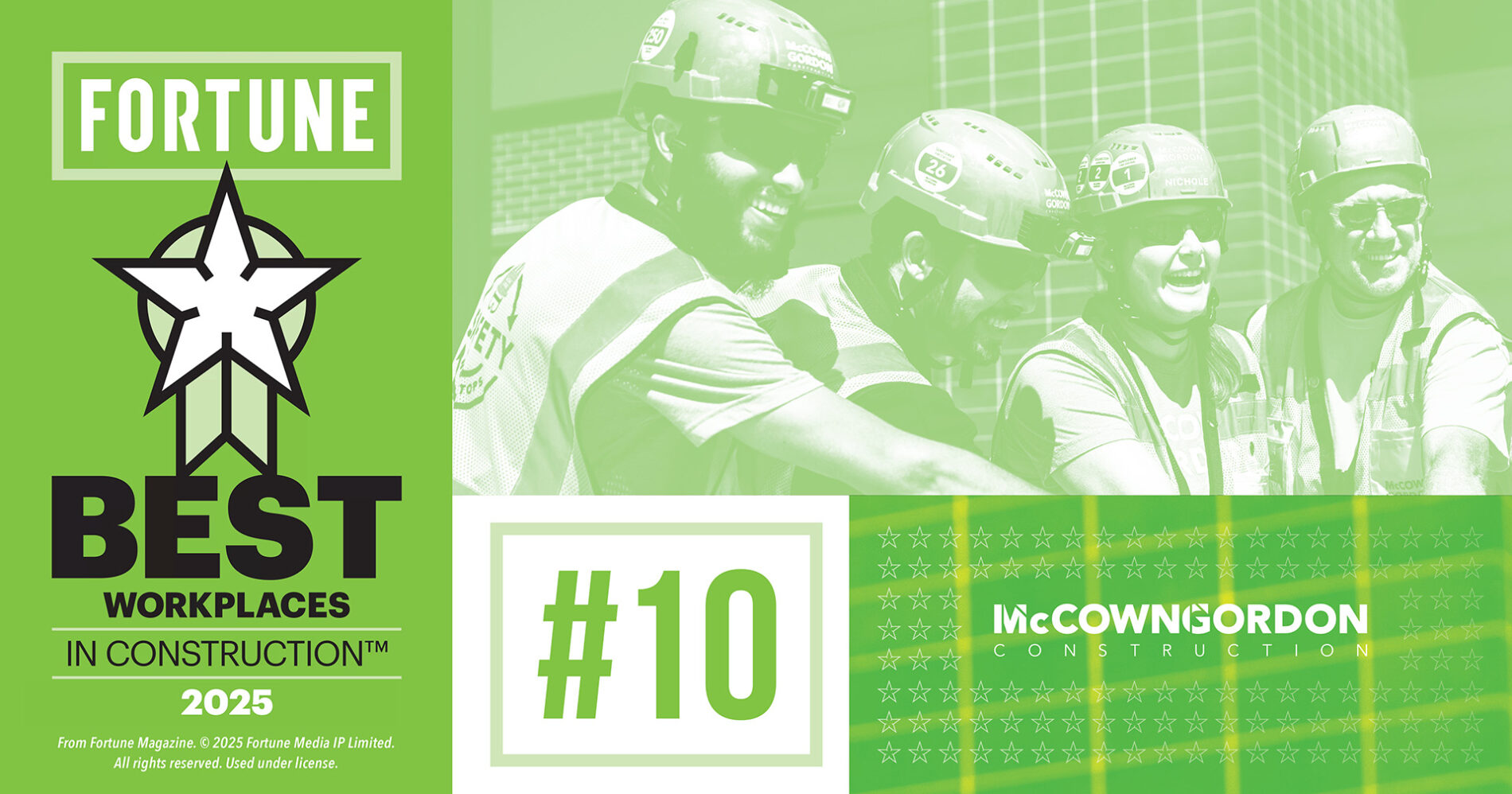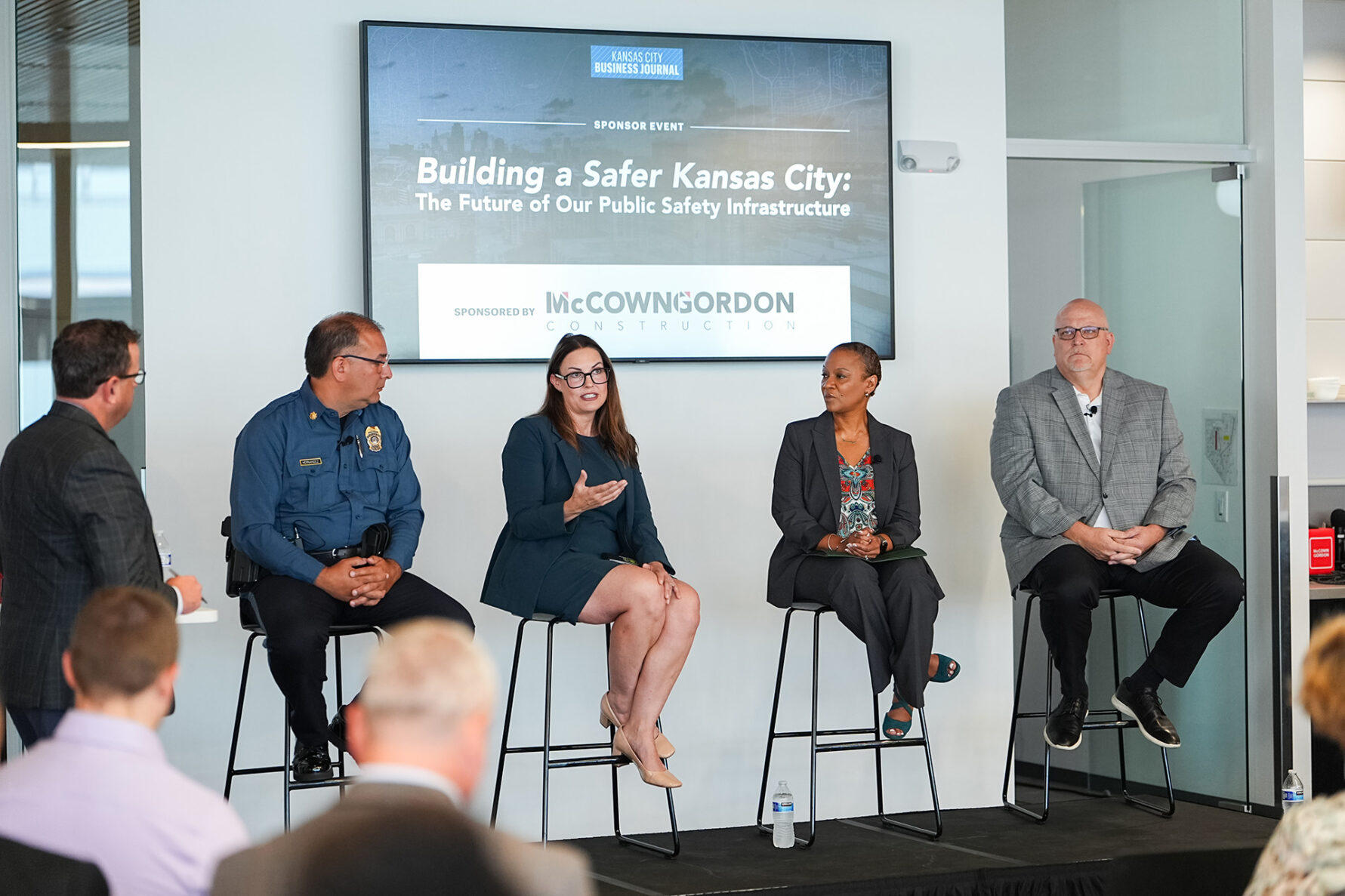Your future workplace
Safety and Wellness in our Post-Pandemic World

During this uncertain time, plenty of questions surround the return to offices, schools and workplaces. McCownGordon hosted a virtual panel enlisting top experts across various fields to get the most recent recommendations addressing these queries. Moderated by McCownGordon Vice President, Business Unit Leader James Isom, the panel was made up of several local and national thought leaders.
The panelists included the following:
Mark Garrett, Vice President, Chief Human Resources Officer, BlueCrossBlueShield
Julie Pierce, PE, LEED BD+C – Senior Vice President, Henderson Engineers
Peter Sloan, AIA, IIDA – Senior Principal, Director of Design, Interiors, HOK
Bryan Johnson – Principal, Colliers International Kansas City
Jeff Simon – Office Managing Partner, Husch Blackwell Kansas City
Isom started the conversation with an acknowledgement that things will look different moving forward. Although nothing is certain, our panelists offered insight into many different angles of this subject to help leaders across the county navigate the new normal.
Response to COVID-19 and Returning to Work
Panelists agreed that first steps towards reopening offices will need to happen slowly at first, and associate wellness is top priority. Most phases will begin in June and some will commence as late as Labor Day. Improving navigation in the office, leveraging technology, and focusing on tenant and landlord relationships will be critical to successfully return to workplaces. Reopenings are going to look different across companies, and each office should open on its own time, Simon shared.
While many employees have proven they can be efficient, creative and productive in a home office, it is not conducive for everyone. Pre-COVID-19, most offices served as a home base for workers and a business requirement, but the function and purpose has shifted. Ninety percent of survey respondents at Husch Blackwell, a law firm headquartered in Kansas City, reported they had no compelling business need to get back to the office to do their work. Nevertheless, other markets find workers feeling isolated and even craving the everyday interactions and constant informal exchange of information you find in an office. The most successful companies will be nimble and agile moving forward, considering all unique situations to ensure optimal health for all associates, both physically and mentally.
People and Culture
Companies recruit and retain top talent because of their company cultures. This is what differentiates the personalities and values of different businesses. Virtual meetings have certainly humanized our co-workers by getting to know their kids and dogs, and possibly even taking a virtual trip to their favorite lounge spot. However, a culture truly grows when people are together.
Leaders will need to rebuild confidence in safety and wellness in the coming months, and when people have a choice, they actually feel safer. The panelists agreed while we will see more mobility in our future workplace, we should ensure the pendulum doesn’t swing too far. Focusing particular mindfulness to ensure employees are engaged, develop professionally and that two-way communication is in place promises to smooth the transition.
Johnson, Principal at Colliers International, made the reference that the Kansas City Chiefs did not win Super Bowl LIV by practicing in their backyards and then coming together for the main event. Much of their training and practicing was performed together for seamless execution on game day.
Future Workspaces
Workplace design is already evolving due to COVID-19. An emphasis on lighting, water and air will be of paramount importance. For instance, Pierce said Henderson Engineers is currently working with K-12 districts to evaluate school buildings and make improvements. By increasing ventilation requirements for virus control, the learning environment is enhanced by providing more fresh air.
Spaces will need to be designed taking into consideration how we want to work together. People need to be willing to work together differently. There will be scenarios of people in rooms combined with virtual attendees, Sloan noted. People will need to adapt to the unequal platforms and decide how to leverage innovation and collaboration while relying on technology.
Asking employees what they want both short-term and long-term will ensure each employee feels included and valued, Garrett added. Leaders should evaluate what is practical with the understanding that employee wellness combined with client satisfaction is what will propel companies forward. Finding the best way to deliver both will separate the good from the great.




